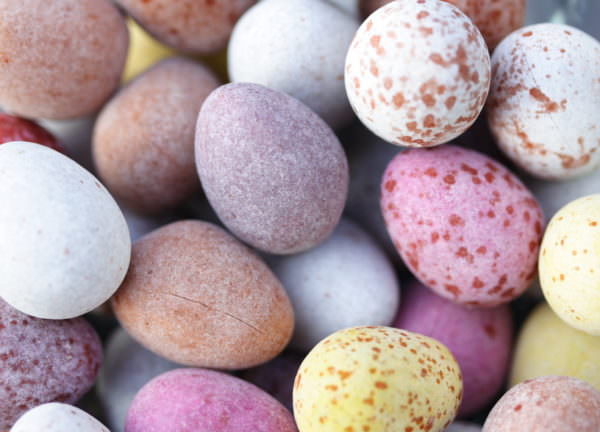
by guest blogger Rich Baringer,
Like most holidays, many Easter traditions are centered on the food we eat while celebrating. Although it is the most holy day on the Christian calendar, many Easter traditions come from pre-Christian pagan cultures. In fact, the word Easter comes from Eostre, the Anglo-Saxon goddess of fertility and springtime. So it’s no coincidence that it was the rabbit, of legendary fertility, that later became a symbol of Easter.
New Life
In the spirit of the holiday, much of our Easter customs have to do with new life. In the Easter story, Christ defeats death by coming back to life after his crucifixion three days earlier.
His move from death to life—which Christians believe gives them eternal life—is celebrated as we move from the death-like cold of winter (at least most years) into the new life brought on by spring.
Why eggs??
The food most identified with Easter is the egg. Another obvious symbol of new life, many ancients believed that the world was formed from an egg.
Chicken eggs, especially, were a symbol of life because the ancients believed that the crowing of the rooster is what caused the sun to rise and the yellow yolk of the egg looked much like the life-giving sun to them. Decorating chicken eggs was popular long before Christianity in many parts of the world (most famously in the Ukraine).
In 1290, Edward I of England (known as “Longshanks”) ordered 450 hard-cooked eggs to be covered with gold leaf and given as Easter gifts, perhaps creating the first decorated Easter eggs.
In Greek and Slavic traditions, eggs are dyed deep red to represent Christ’s blood. Even egg rolling, like that done on the White House lawn, has its roots in an ancient game where the rolling egg represented the stone rolling from Jesus’ grave.
Traditionally, lamb has been the meat of choice for Easter dinner. Those of the Jewish faith know of the lamb’s importance in the Passover story and, as some Jews became early Christians, they brought their custom of the sacrificial lamb with them. Jesus was called the Lamb of God by these new Christians to emphasize his sacrifice.
Today, ham is probably the most popular Easter meat, but this too, is no accident.
In ancient Indo-European cultures, the pig was known as a symbol of good luck and prosperity (that’s why we have piggy banks). Pork is still eaten for celebrations in many cultures, including the good luck New Year’s meal. Ham (cured pork) may have become an Easter staple simply because of timing. The animals were slaughtered and their meat cured in the fall, so by the time Easter rolled around, the meat was ready to eat.
The evolution of hot cross buns
Hot cross buns are a long-standing Good Friday tradition in England that now crosses (no pun intended) the whole Easter holiday. Ancient Anglo-Saxons ate similar buns to honor their goddess, Eostre; the bun symbolized the moon and the cross-designated its quarters.
Christians continued the custom by attaching their beliefs to those same symbols: the cross representing the cross of Christ, the bun is a symbol of the stone that was rolled away from the tomb and the spices in the recipe brings to mind the burial spices of those times.
So as we move through the Easter season once again, we can feel a part of the many people through the ages and all over the world who have passed on these traditions. And we can enjoy some good food in the process.
Here are some Easter recipes that you can try out this year:
Fool-Proof Hard Boiled Eggs
Make as many eggs as you wish, as long as they are in 1 layer in the bottom of a pan and can be covered with 1 inch of water.
HOW TO
- Place the eggs in a saucepan, cover with 1 inch of water and bring to a boil over high heat. Remove the pan from the heat, cover and let sit for 10 minutes. Meanwhile, fill a bowl with cold water and a tray or two of ice.
- Transfer the eggs to the ice bath with a slotted spoon and let sit for 5 minutes. Decorate or peel and eat.
Orange, Cinnamon & Star Anise Ham Glaze
from Cook’s Illustrated
INGREDIENTS
1 cup juice plus 1 Tbsp grated zest from 2 large oranges
2 cups packed dark or light brown sugar
4 pods star anise
1 (3-inch) cinnamon stick
[See directions below]
Spicy Pineapple-Ginger Ham Glaze
from Cook’s Illustrated
INGREDIENTS
1 cup pineapple juice
2 cups packed dark or light brown sugar
1 (1-inch) piece fresh ginger, grated (about 1 Tbsp)
1 Tbsp red pepper flakes
HOW TO
For both glazes:
- Bring ingredients to a boil in a small nonreactive saucepan over high heat; reduce heat to medium-low and simmer until syrupy and reduced to about 1 1/3 cups, 5-7 minutes. Baste ham every 45 minutes and serve remaining glaze as a sauce, if desired. (Glaze will thicken as it cools between bastings; cook over medium heat about 1 minute, stirring once or twice before serving.)

Hot Cross Buns
INGREDIENTS
For the buns:
1/3 cup sugar
1 package dry yeast (2 ¼ tsp)
¾ cup warm whole milk (100-110°F)
4 cups all-purpose flour, divided
6 Tbsp butter, melted
¾ tsp salt
½ tsp ground cinnamon
¼ tsp ground ginger
¼ tsp ground nutmeg
2 large eggs
½ cup golden raisins
For the glaze:
1 cup powdered sugar
1/8 tsp ground cinnamon
2 Tbsp whole milk
HOW TO
- Dissolve sugar and yeast in the warm milk in a large bowl; let stand 5 minutes. Add 3¾ cups flour, butter, spices and eggs to milk mixture, stirring until a soft dough forms.
- Turn dough out on a lightly floured surface. Knead in raisins and continue kneading until smooth and elastic (about 6 minutes); add enough of the remaining flour, 1 Tbsp at a time, to prevent the dough from sticking to your hands.
- Place dough in a large bowl coated with cooking spray, turning to coat top. Cover and let rise in a very warm spot, free from drafts, 45 minutes or until doubled in size. Punch dough down; cover and let rest for 5 minutes.
- Divide dough into 20 equal portions; roll each into a ball. Place balls in a 9-inch square baking pan coated with cooking spray. Cover and let rise for 45 minutes or until doubled in size. Preheat oven to 350°F.
- Uncover and bake for 20 minutes or until golden. Cool in pan for 5 minutes on a wire rack and then remove from pan.
- For the glaze, combine the powdered sugar and cinnamon with whisk, then stir in the milk. Spoon a cross on top of each warm roll
Rich Baringer is chef/owner of Dinner’s Done Personal Chef Service. Rich grew up in Haycock Township and has lived (and eaten) in Bucks County his whole life. He now lives in Blooming Glen Village with his wife, Mary Beth, his son Jake, and Ophelia, the cat. Rich graduated from the Culinary Business Academy in Atlanta, became a member of the U.S. Personal Chef Association and started Dinner’s Done Personal Chef Service. For more information about Dinner’s Done PCS, contact Rich at 215-804-6438, dinnersdonepa@comcast.net or check out his website.
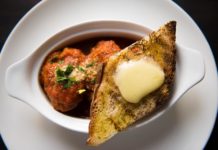
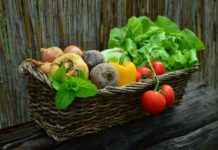

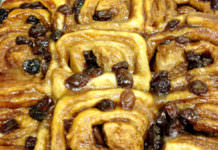

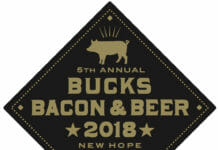
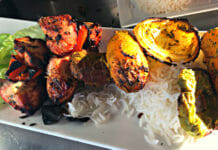

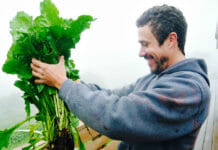
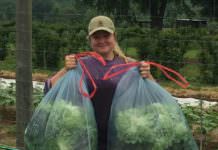
![What we’re reading [Oct 16 2017]](https://www.buckscountytaste.com/wp-content/uploads/2017/10/coffee_macbook_reading_pexels-photo-414630-218x150.jpeg)
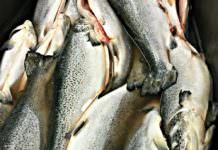
[…] year I wrote a bit about some of our long-standing Easter traditions that center around food. They are based on the religious meaning of the holiday and date from […]
[…] this holiday week, so my post will be short. Rich Baringer, our guest blogger, has two posts about Easter food traditions – including the candy ones! – for you to enjoy. Have a very happy […]